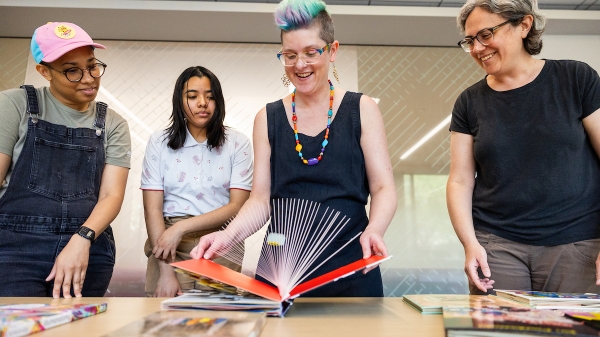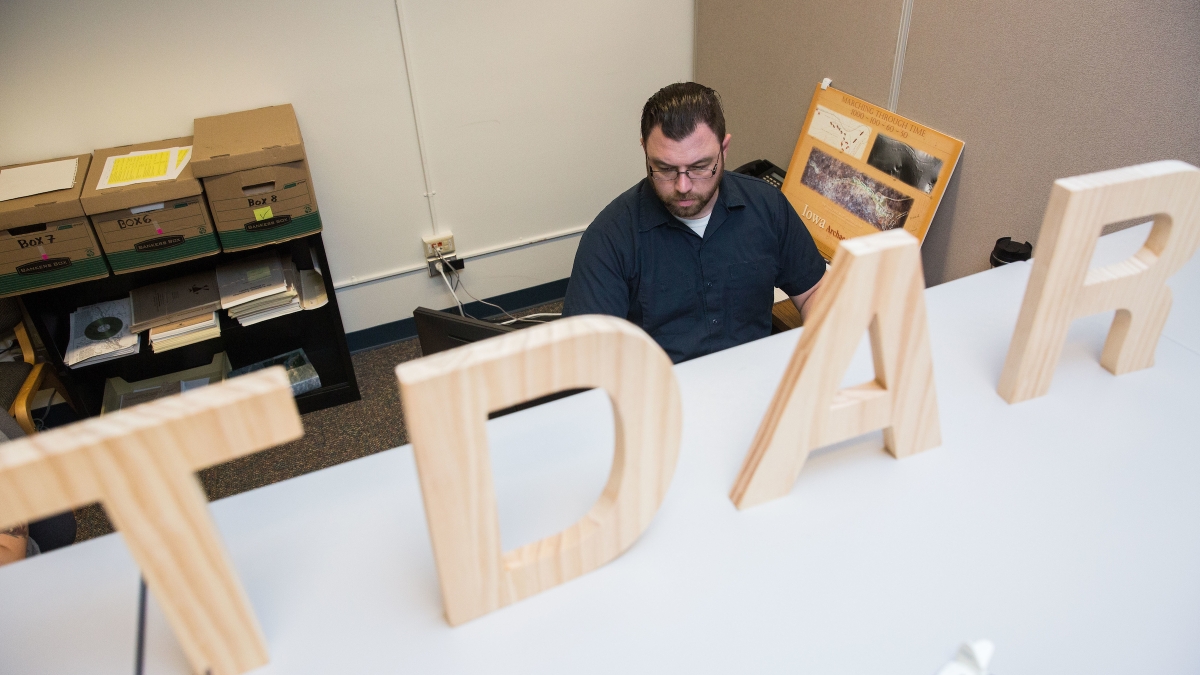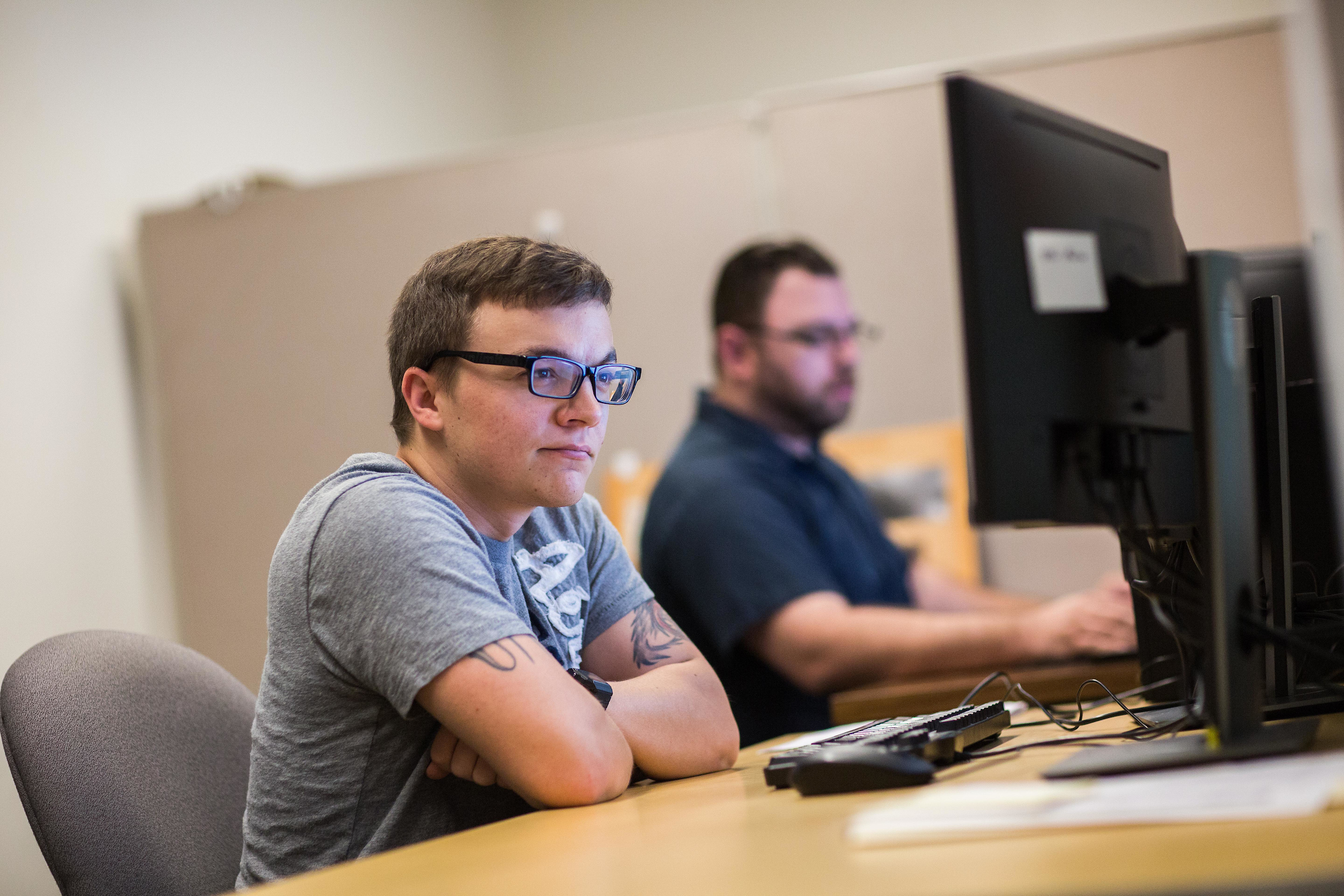Military veteran students at Arizona State University are preserving irreplaceable archaeological records for future generations thanks to an innovative initiative by the school’s Center for Digital Antiquity.
As the nation’s largest digital repository of global archaeological data and information, the center has hired student veterans as digital curators. They'll work on a U.S. Army Corps of Engineers project making thousands of previously unreleased records public as part of the Veterans Curation Program.
The corps has decades of archaeological investigations to catalogue, and putting students on the task “just made sense,” said Frank Pierce-McManamon, executive director of the Center for Digital Antiquity of the School of Human Evolution and Social Change.
“There are a lot of student veterans at ASU, and (the university) really tries to take care of these folks and give them opportunities,” Pierce-McManamon said.
The first two student veterans started working in August with two others joining the team this month.
“This program is really good,” Army veteran Nickolas Rudolph, one of the new student digital curators, said. “I would love to see more people be able to take advantage of it.”
Rudolph, who is pursuing a second ASU bachelor’s degree in forensics, has been interested in archaeology for a long time and saw this opportunity as a perfect fit. He also sees it as a greater cause.
“I basically jumped at the chance to be able to work in this field and gain some experience,” he said. “And I think also, it’s important to me to do something that is still some kind of service to the greater community.”
As a former Army counterintelligence agent, Rudolph is no stranger to collecting information for others to examine. He compares this job with military intelligence document exploitation, a task he did in Afghanistan.
“It’s all very similar,” said Rudolph. “It’s all about taking information and making sure it’s able to be found and analyzed.”
The key word is “found” for Rudolph and fellow student veteran Tyler Sutton, who started working at the center at the same time. As they add records to a digital file and create the metadata so that info related to archaeological reports, artifacts, images, and projects can be picked up by internet search engines. This means thoroughly reading each report — which can vary from a few pages to hundreds of pages — to create keywords and determine which elements to highlight so the data can be easily accessed by the public.
“It’s not just simple data entry,” said Sutton, digital curator and Air Force veteran. “You really have to use good judgment."
Air Force veteran and senior criminology and criminal justice major Tyler Sutton works to digitize archeological records in Hayden Library on the Tempe campus on Sept. 14. Photo by Deanna Dent/ASU Now
From reports documenting ancient burial grounds in Hawaii to mass graves in the Middle East, Rudolph and Sutton have learned a lot about archaeology, the U.S. and the world. Occasionally, there is a personal run in with the past. Rudolph said a report he worked on related to a mass grave site in Basra, Iraq, “sticks out because I’ve been there. It’s interesting.”
An archaeological background is helpful but not essential for the digital curator job, said Leigh Anne Ellison, Center for Digital Antiquity program coordinator. “They’re definitely learning some archaeological terms along the way,” she said. “Information management is one the major skill sets they’re developing.”
Digital curators need to be technologically savvy and accurate, said Jenny Cashman, Center for Digital Antiquity research analyst and digital curator.
“That’s one of the things that we looked for, attention to detail and ability to just understand that accuracy is important,” Cashman said. “Because if [information] is not entered accurately, no one can find it later in a search.”
An analysis by the center illustrates the popularity of the information being digitized and made public at ASU. “We have records of millions of page views” and “tens of thousands of downloads,” Pierce-McManamon said.
Archeologists doing work research are some of the primary customers. Others include the general public researching family or town histories.
The concept has room to expand. Student veterans could be employed to collect other Department of Defense records or archaeological materials from other government agencies. In the future, not only could the digitization take place at ASU but also the lab portion of initially scanning all the archaeological collections.
“That’s definitely a down the road plan,” Ellison said. “There is space to grow there, and certainly if we could expand beyond Corps of Engineer collections.”
___
Top photo: Senior forensics major and army veteran Nick Rudolph works to digitize archeological information at Hayden Library on ASU's Tempe campus on Sept. 14. Photo by Deanna Dent/ASU Now
More Arts, humanities and education

The College set to launch 15 new degree programs
The College of Liberal Arts and Sciences at Arizona State University is launching 15 new academic programs in fall 2024. Nine of those programs will include online formats, expanding learning…

Mother–daughter duo travel abroad while advancing education through online offerings from ASU
Getting an education while seeing the world with your loved ones? Sounds like a dream come true.For 12-year-old Aanya Sosa and her mother, Beth, it’s a reality, thanks to online educational offerings…

ASU Library collection is deceptively simple fun
Editor’s note: This is part of a monthly series spotlighting special collections from ASU Library’s archives throughout 2024.Arizona State University’s Eugene D. Valentine Collection is a whimsical…

